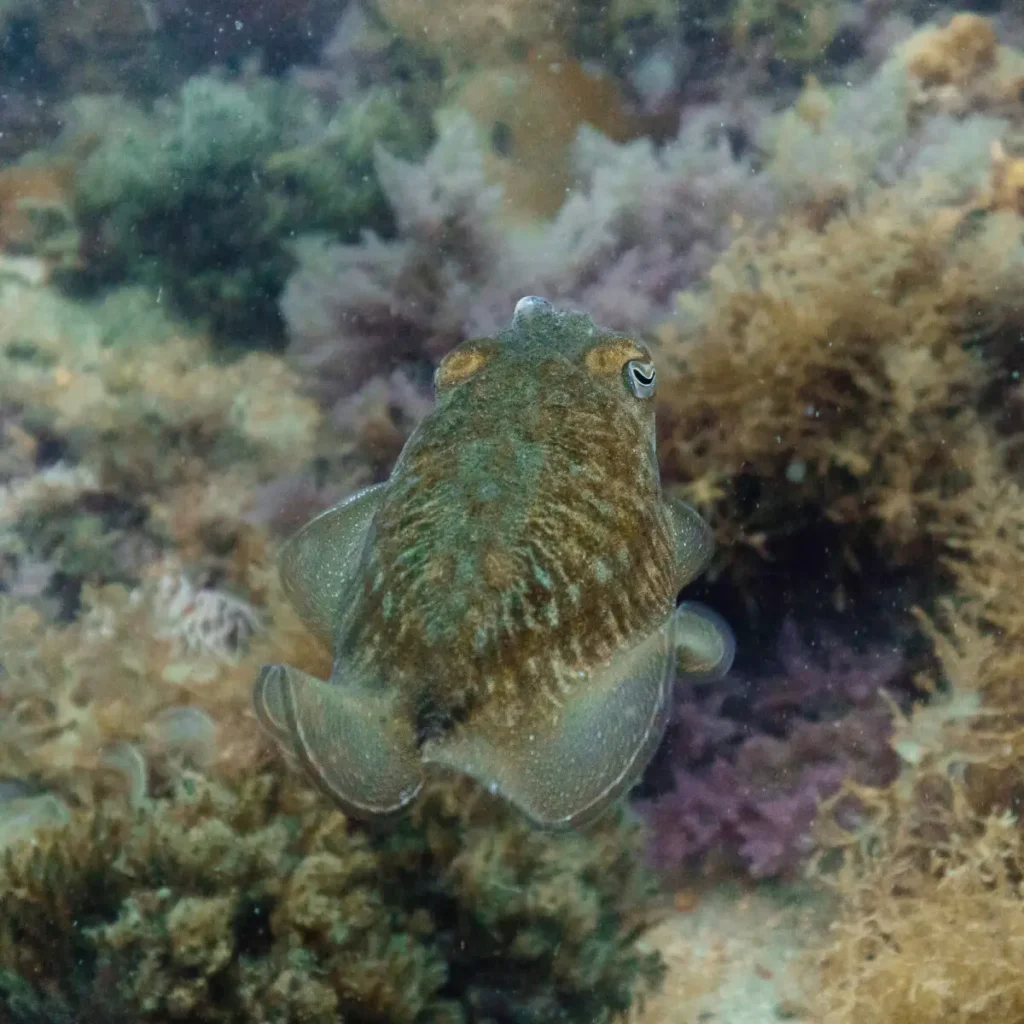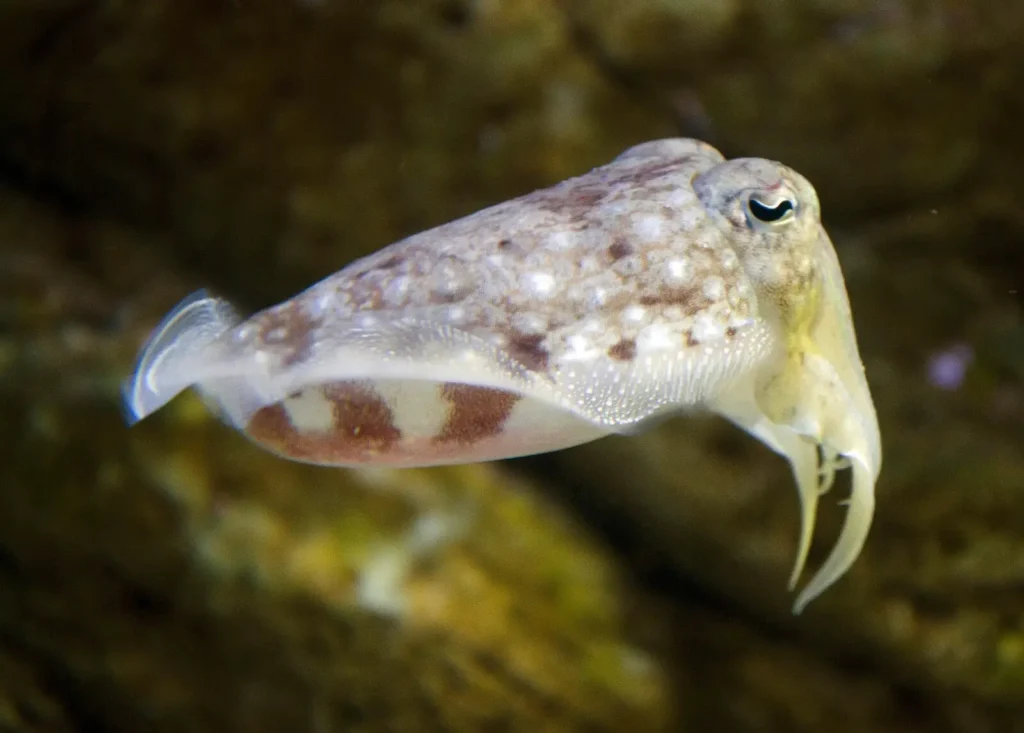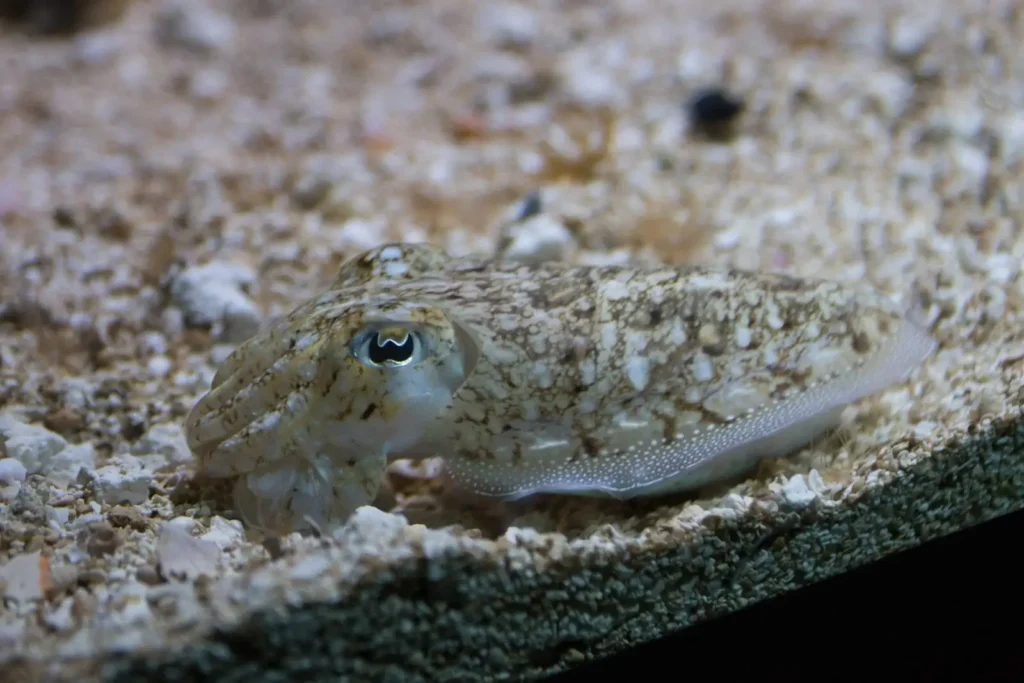Sepia officinalisalso known as the common cuttlefish, is one of the most common and well-known species of cephalopods belonging to the family Sepiidae. This species is characterized by high adaptability to different environments and is of great economic importance due to its use in fishing and cooking.

Classification
• The Kingdom: Animalia
• Type: Mollusca
• Class: Cephalopods (Cephalopoda)
• Row: Cuttlefish (Sepiida)
• Family.: Sepiidae
• Gender: Sepia
• View: Sepia officinalis
Appearance
📏 Sizes
- Body length: up to 50 cm
- Width: up to 25 cm
- Weight: up to 3 kg
🎨 Description
- The cuttlefish has a characteristic elongated body consisting of a head, mantle and eight tentacles
- Colors can range from light brown to dark brown, and its skin is able to change color thanks to chromatophores, which allows this species to mimic its environment
- It has an internal structure - a "cuttlefish" (internal calcium skeleton), which helps maintain the shape of its body
- The eyes are large, round, with excellent vision, which allows the cuttlefish to hunt effectively
Range and habitat
🌍 Area
- Sepia officinalis is distributed in the Atlantic Ocean, the Mediterranean Sea and adjacent coastal waters of Europe, Africa and the Middle East
- This species is usually found in coastal waters at depths of up to 200 m, often in areas with sandy or muddy bottoms
🌿 Living environment
- The cuttlefish prefers warm water where there is enough food for its nutrition
- It can also actively move in search of food, as well as choose shelter among algae or on the seabed

Environmental role
- Sepia officinalis plays an important role in marine coastal ecosystems, where it occupies the position of a predator, hunting fish, crustaceans and mollusks
- In addition, this species is food for larger marine predators such as dolphins and large fish
- Cuttlefish are an important component of the marine food chain, controlling the number of small animals
Behavior
💨 Mobility
- The cuttlefish is a very fast and agile predator, capable of active swimming by means of reactive movement - ejecting water through its mantle, which allows it to quickly change direction
- It can also "bounce", using its tentacles to move along the bottom
🔄 Dietary regimen
- Cuttlefish is a predator that hunts fish, crustaceans, small mollusks and other marine organisms
- Thanks to its sensitive tentacles and powerful jaws, it can capture and eat prey using its sharp teeth
Reproduction
💞 Mating
- Sepia officinalis has an interesting reproduction strategy. The male transmits spermatophores to the female through a special organ, the homocotyledon.
- After mating, the female lays eggs on the seabed in a shelter where the larvae develop
🐣 Development
- Cuttlefish larvae usually look like small cuttlefish with small tentacles, capable of swimming and moving, which allows them to develop freely in the water

Population and conservation status
📉 Current status
- Sepia officinalis is one of the species actively caught in fisheries, so the population in some regions may be at risk
- However, this species is not directly threatened in most of its habitats
🟢 IUCN: Least Concern
- The Least Concern status reflects the current state of the population, although it is worth monitoring its numbers due to changes in ecosystems and fishing
Interesting facts
✔️ Cooking: Sepia officinalis meat is popular in many countries, particularly in Europe and Asia. It has a delicate flavor and is often used in various dishes, such as dips, pasta and soups
✔️ Color change: The cuttlefish can change its skin color using chromatophores, which allows it to hide from predators or mimic its environment
✔️ Intelligence: Cuttlefish have the highest level of intelligence among invertebrates, can solve complex problems and even use tools to obtain food
Conclusion
Sepia officinalis is not only an important predator and part of marine ecosystems, but also a delicious delicacy that is important to the global fishing industry. Its ability to mimic and rapid movement make this species unique among cephalopods. However, as with many other species, it is important to control its harvest and preserve ecosystems to sustain the Sepia officinalis population in the future.
